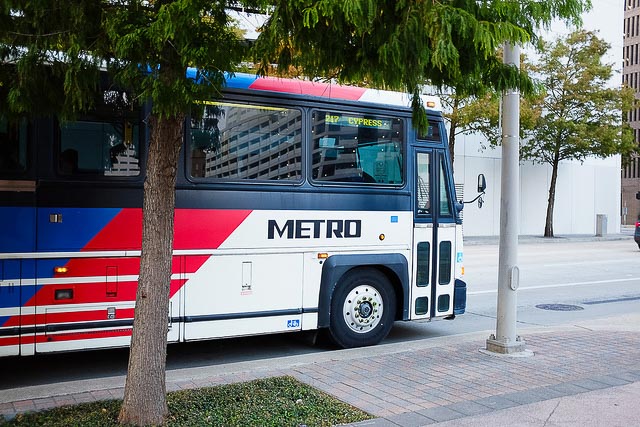Its routes are largely a holdover from the streetcar era, arranged in a radial pattern designed to bring people to work downtown. Today, Houston’s geography is sprawling, with residential and work centers scattered throughout the region.
Moreover, many buses serving areas with major growth don’t come frequently. Those lengthy headways essentially penalize people who rely on transit by giving them less flexibility in their travel plans, he said.
“For a bus network, it’s very confusing,” said Luhrsen, vice president for service planning and transit reimagining at the Metropolitan Transit Authority of Harris County, which serves the Houston area. “The routes have convoluted twists and turns, and it’s relatively infrequent.”
This August, that’s all going to change. He’s part of a team that is leading Metro’s “reimagining” of the Houston-area’s bus network in an effort to make buses more useful to residents.
The plan will create simpler routes that are more akin to a grid than a radial system. Meanwhile, Metro is upping the number of high-frequency routes to more than 20 in order to ensure residents don’t have to regularly consult the bus schedule.
Those high-frequency routes will include buses that arrive every 15 minutes – or sooner – for 15 hours per day, seven days per week.
Today, Metro’s bus system has about 210,000 riders daily. Luhrsen said the agency will almost certainly experience a significant increase in those numbers once the changes take effect.
Those moves are expected to complement Metro’s light rail expansion. The agency will open two new light rail lines next month. “People are looking for places to live where they don’t need to use their car for every type of trip possible,” said Luhrsen, speaking at a panel at the Urban Land Institute’s spring conference in Houston Thursday.
Luhrsen said he’s asked developers around the city whether they think the increase in high-frequency buses will be an asset for their projects. Those working far from downtown admitted the new bus network probably won’t be that relevant to their projects, he said. In a big, sprawling city – for now – cars are still king in the most far-flung areas.
But, he added, developers focusing on in-fill projects in the densest part of the city see the bus network as way to pitch their projects to people who are interested in driving less.
As a result, Metro has started a pilot program with developers along the high-frequency bus lines in which the agency would grant a seal-of-approval to projects that developers could then use to market them as transit-accessible.
“It’s an opportunity for them to provide less parking and provide a sales pitch to people to live the car-light lifestyle,” Luhrsen said. “They can sell that their building has access to Midtown, to downtown, to the theater district in a different way.”


